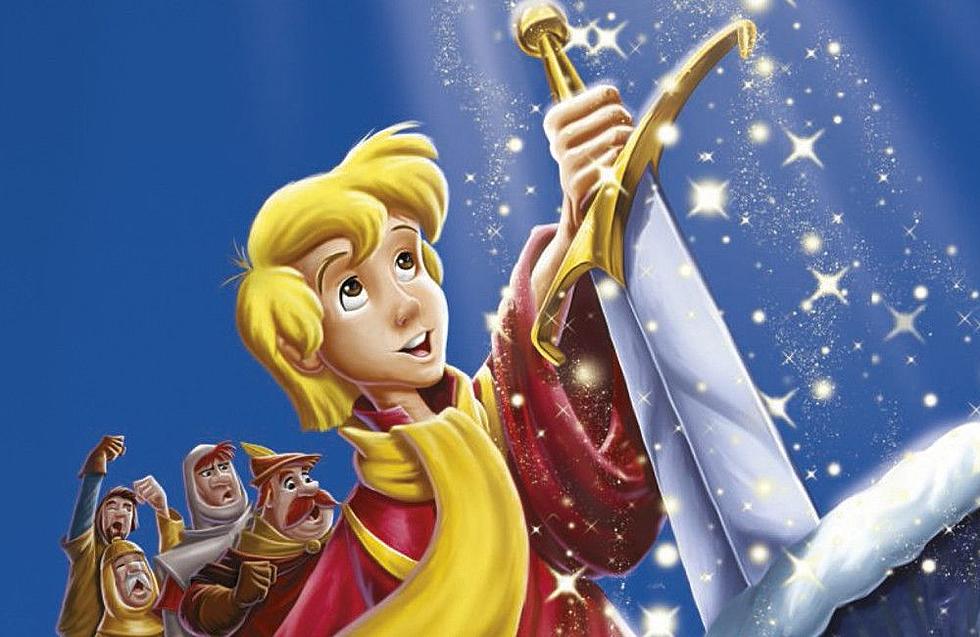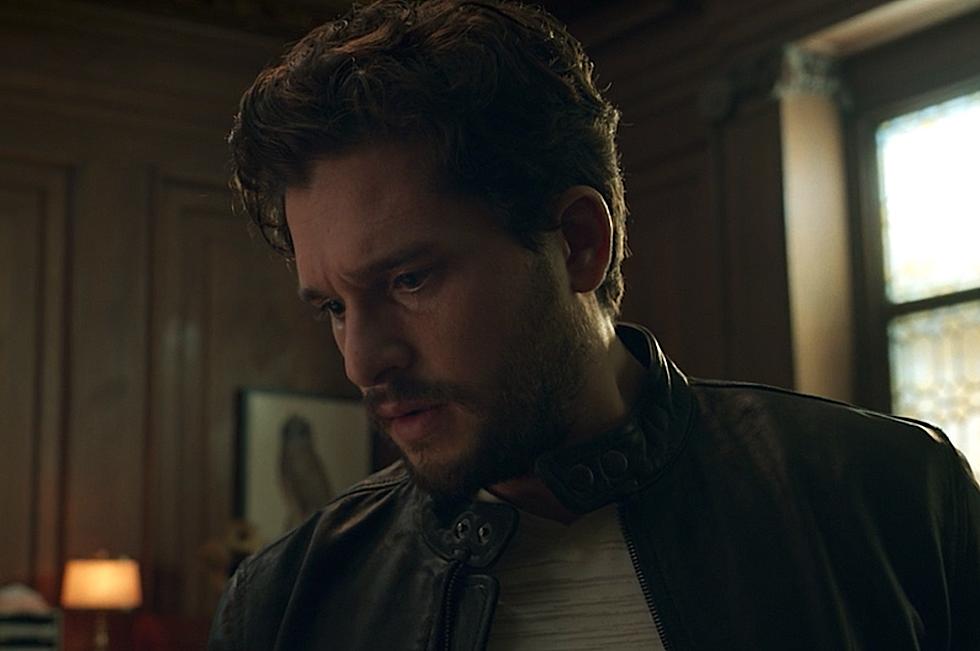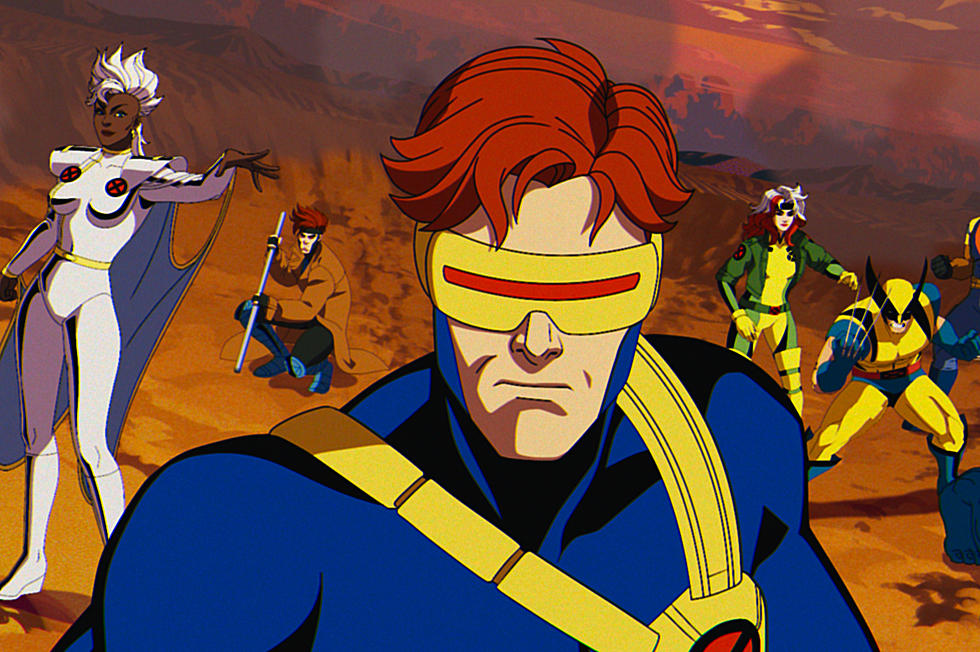
The Strangest Kids Movies Ever Made
This Friday, Paramount Pictures is releasing what will surely be the finest family film of 2017 so far: Monster Trucks, which prompted the studio to take a $115 million write-down months before the movie was released. (Shocking that a movie thought up by a four-year-old wouldn’t be a guaranteed money maker!) While the premise — they’re trucks, but with, like, monsters inside — is pretty goofy, it’s by no means the goofiest premise a Hollywood studio has tried to foist onto an unsuspecting public of children. In (dubious) honor of Monster Trucks, here’s our list of 10 of the truly weirdest oddball children’s movies in history.
The Witches (1990)
Directed by Nicolas Roeg
Roald Dahl’s books have long been the source of off-kilter children’s movies. (Willy Wonka and the Chocolate Factory is weird enough with its nightmarish boat ride, and Johnny Depp’s Michael Jackson-inspired chocolatier in the 2005 remake is plenty disturbing too.) The 1990 adaptation of The Witches is maybe the strangest of all, especially when you note that it’s directed by Nicolas Roeg, of Don’t Look Now and The Man Who Fell to Earth. It’s ostensibly the story of how a little boy discovers a plot by witches to transform children into mice, but the visualization of that adventure — replete with Roeg’s off-putting cinematographic style and unnerving effects by Jim Henson’s Creature Shop — is truly terrifying. Nothing against the Wonka movies, but Anjelica Huston’s transformation from stylish brunette to long-nosed witch is still haunting more than 25 years later.
Return to Oz (1985)
Directed by Walter Murch
Beloved or not, there’s no doubt that The Wizard of Oz is an unusual film. Flying monkeys, hallucinatory flowers, a talking scarecrow; these are very weird elements. But the original Oz has nothing on the 1985 sequel from Disney, Return to Oz, directed by Oscar-winning editor Walter Murch. Murch worked with Francis Ford Coppola and George Lucas over the years, which is why Disney’s choice to fire Murch from the project was overturned. The film has a cult following and is plenty disturbing, both before and after Dorothy (Fairuza Balk) returns to the land of Oz. Though the Scarecrow, Lion, and Tin Man briefly show up, characters like Jack Pumpkinhead and Tik-Tok (a robotic walking clock) are Dorothy’s new, bizarre friends. Return to Oz is messy, but it’s almost impressive Disney released a movie as likely to incur nightmares as this.
The Black Hole (1979)
Directed by Gary Nelson
The late 1970s and early ’80s were a boom period at Walt Disney Pictures for crazy children’s movies. Bette Davis, in the twilight of her career, starred in two such films, including the horrifying The Watcher in the Woods. But for a glimpse at the truly inexplicable, watch The Black Hole, which ends with what can kindly be called an homage to 2001: A Space Odyssey (in a kids’ film!), and, among other things, features a wacky robot voiced by Slim Pickens. The plot — in which a spaceship’s officers investigate a black hole and a discover derelict ship nearby — is dark enough before the bewildering finale. If Disney does remake the movie, as they’ve often hinted, it’s hard to imagine they’d stay true to the original’s closing. If they did, it’d be a rare step back to the surreal.
Pinocchio (1940)
Directed by Ben Sharpsteen and Hamilton Luske
The Golden Age of Disney animation encompasses just five of the company’s deservedly beloved features. Let’s not discount that these are truly weird movies; both Fantasia and Dumbo were very close to making this list. However, Pinocchio, the 1940 animated classic being re-released on Blu-ray this month, is arguably Disney’s oddest animated feature. Pinocchio not only serves as a (likely unintentional) anti-smoking tract, it’s a truly distinct coming-of-age saga, and a horror story about growing up to be a human by fighting a whale, nearly being transformed into a mindless jackass, and learning not to lie lest your nose grow multiple feet in length. Pinocchio is a wonderfully memorable film, precisely because it’s strange.
The Brave Little Toaster (1987)
Directed by Jerry Rees
Imagine a world in which inanimate objects travel through the big city to reach their adolescent owner, nearly sacrificing their lives in a fiery junkyard on the way. That might sound like something out of one of the Toy Story movies; in fact, many elements of Woody and Buzz’s ongoing adventures are evident in the 1987 independent animated film The Brave Little Toaster, whose co-writers include future Pixar filmmakers Joe Ranft and John Lasseter. The Brave Little Toaster has similarities to Disney animated films of its era, with wacky comic relief, bouncy music, and memorable performances (Phil Hartman and Jon Lovitz both show up). But the depiction of the city, and of the appliances traveling to find their master, is prickly and uncomfortable. Thanks to its independent roots, Toaster is coated in less sugar, and covered in much sharper edges, than Pixar’s later animated films.
Where the Wild Things Are (2009)
Directed by Spike Jonze
The 2009 adaptation of Where the Wild Things Are isn’t the first feature-length version of a short children’s picture book. (Warner Bros. also released The Polar Express, in which a boy encounters Santa, a leering hobo, and an elf voiced by Steven Tyler. It’s plenty perplexing all on its own.) This Where the Wild Things Are is more than an expanded version of Maurice Sendak’s iconic story; it’s a Spike Jonze film about how a family defined by divorce can harden children. A little boy escapes to an island of mischief with life-size monsters, but that escape is tinged with the monsters’ own regret and heartbreak. Where the Wild Things Are is a remarkably singular mainstream film, where an overriding reaction has to be, “How the hell did anyone green-light this at such a big budget?”
The Dark Crystal (1982)
Directed by Jim Henson and Frank Oz
Jim Henson is synonymous with lighthearted family entertainment. But Henson’s non-Kermit films are plenty odd, even with Muppet-like creations on display. The Dark Crystal, the 1982 fantasy film he co-directed with Frank Oz, is easily the oddest of his sadly truncated filmography. There are many familiar names associated with The Dark Crystal, including Muppet performers like Henson, Dave Goelz, and Steve Whitmire. But the film is essentially an dark vision of good versus evil with nary a human in sight, closer to experimental puppetry than “Pigs in Space.” There aren’t too many kids films with the word “dark” in the title; as the title suggests, The Dark Crystal is a grim, off-kilter film.
The NeverEnding Story (1984)
Directed by Wolfgang Petersen
In addition to being the source of a truly great gag on The Simpsons, 1984’s The NeverEnding Story is one of the biggest films on this list. At the time of its release, this was the most expensive movie produced outside the U.S or Soviet Union; in its native Germany, the film was a big hit. It was a minor success in the US, though it did lead to a couple lesser sequels. Based on the Michael Ende novel, The NeverEnding Story is certainly an odd film, with a nearly meta story-within-a-story structure about a magical land being destroyed by something called The Nothing. Compounding the unavoidable peculiarity is the obvious over-dubbed performances from some of the actors in the American version. Maybe that fits, though: like Bastian reading the eponymous story, it’s as if we’re hearing an unseen narrator’s version of how these characters should sound.
The Secret of NIMH (1982)
Directed by Don Bluth
Don Bluth began his career working for the Walt Disney Company, but he had grown bored of what he saw as old-fashioned storytelling from the animation studio in the 1970s. As such, he led a mini-revolt and walked out with some other animators to create their own studio. The Secret of NIMH was the first feature-length animated film his studio would make, an adaptation of a Robert C. O’Brien novel all about mice and rats who are smarter and tougher than other such rodents because they were subjects of scientific experiments. Sure, there’s comic relief (Dom DeLuise as a wacky crow) and magical powers, but the premise alone is darker than anything Disney had done. Bluth would make other puzzling animated films — All Dogs Go to Heaven, as the title suggests, is pretty baffling — but this one’s still the oddest.
The 5,000 Fingers of Dr. T (1953)
Directed by Roy Rowland
Of course the only film Dr. Seuss wrote would make its way onto this list. The 5,000 Fingers of Dr. T, despite Seuss’ reputation, comes from some non-family-friendly names. The film’s producer was Stanley Kramer of Judgment at Nuremberg and Guess Who’s Coming to Dinner fame. The premise is Seussian by way of The Wizard of Oz: A boy suffers through piano lessons only to dream himself into a nightmarish vision where his teacher, Dr. T (Hans Conried, the voice of Captain Hook in Disney’s Peter Pan), has imprisoned 499 other boys to play a massive piano. It’s a gobsmackingly odd film, with whimsical lyrics, dark undertones, and more. Though it wasn’t a hit, The 5,000 Fingers of Dr. T is notable for having inspired some elements of The Simpsons, including Bart Simpson’s name.
Can You Guess the Actor Based on their Incredibly Inaccurate Action Figure?
More From ScreenCrush









